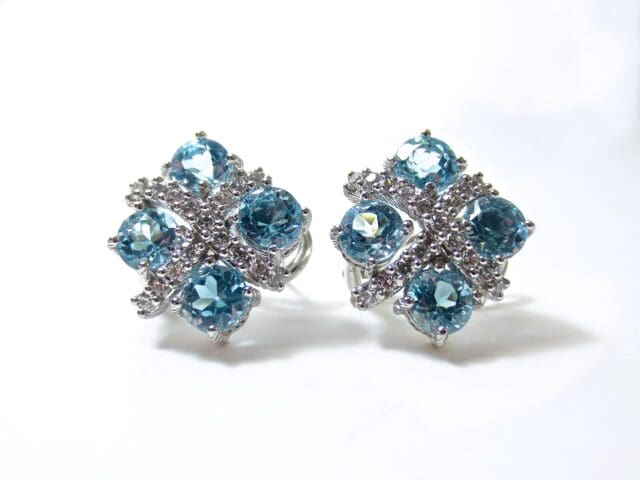The expensive scintillating diamonds have unknowingly become a status symbol in our society. Many people look at diamond jewelry as a flexing stone rather than a piece of jewelry. On the one hand, the jewelry market is flourishing with its full potential. Whereas on the other hand, it is leaving some bad footprints behind.
The lack of awareness about the diamond extraction process never brought the sight of people towards this concern. But, this needs to change. Buyers across the world should be aware of the pros and cons of the jewelry they buy. Also, there is a need to spread knowledge about the existing solution to this problem.
Is the conventional diamond industry sustainable?

Natural and raw diamonds are always in demand due to their dynamic shine. But, now the time has come, we bring our attention to these gloomy diamonds’ roots.
By the term conventional, it means that what fraction of the diamond industry relies on a regular mining process for the extraction of diamonds. The epicenter of the debate over the sustainability of the diamond industry lies in the mining process only.
Digging around the depths of the earth with huge machines harms the quality of soil over that area. Even though mining sites can be rehabilitated, the deterioration of environmental quality in that particular area remains a problem.
And, the labor involved in carrying out these activities is not treated appropriately. The mining companies hire some low-wage laborers. Irrespective of the harmful health risks and wage increase, these people are forced into labor.
In many countries, children from an early age are compelled to do such jobs. This sometimes makes them a victim of physical or sexual abuse.
The plight of brands towards such practices
As jewelry brands, everybody wants to have a diamond extracted at a low cost. But only a few brands maintain their social responsibility while ignoring the cost factor. These brands only put people’s safety and the environment on the table more than some low diamond prices.
Since environmental impact and poor labor conditions are a part of the diamond commodity chain, the more the brands demand diamonds extracted from such practices, the more these laborers are prone to do such unhealthy jobs. In addition to brand awareness, customers, in general, should also be aware of the brand they are selecting.
As a responsible diamond buyer, people must consider all the backend facts while selecting any particular jewelry brand. This compels the brands themselves to follow their social responsibility towards the earth and its people.
Although, many responsible brands have taken the initiative to work with expensive but good-quality mines. These mines follow safety rules and do not harm the surrounding. Hence, their diamond extraction process proves to be safe for both humans and the environment.
These small gestures of providing a hand of humanity are appreciable but not worthy enough. We need more responsible brands, and awareness drives like this to ensure the safety of those people. Because in many parts of countries like Africa, child labor in the name of diamond mining is still intact.
Lab-grown Diamonds- The Ray of Hope

As of now, enough facts and realities have been put in front. But, at the first look, this group of information seems anti-diamond. However, the narrative focuses on shedding light on the cons of the diamond industry. One should not confuse it with the banning of diamonds.
This section talks about the solution to the incompatibility of diamonds with the new luxury. Lab-growing diamonds are an evolving class of diamonds that is man-made but does not harm the environment.
Lab-grown diamonds, as the name indicates, are manufactured in laboratories. To carry this out, jewelry experts create similar environmental conditions as present in the earth’s core. Without any involvement in mining, this class of diamonds is way more eco-friendly than natural diamonds.
However, people who think of buying lab-grown diamonds must not doubt these diamonds’ resilience because their shine and toughness are very close to the specifications of a natural diamond.
Many prestigious groups such as the Gemological Institute of America and the American Gem society recognize these diamonds. Hence, the fear of not buying verified diamonds gets eliminated here.
Another advantageous fact associated with lab-grown diamonds is the low price. Jewelry made up of lab-grown diamonds costs less as compared to that made up of natural diamonds. Therefore, the advantages of lab-grown diamonds over natural ones make them a more viable option.
Keeping this suggestion in mind, many jewelry manufacturers are taking part in the initiative. Brands are coming forward to increase and promote the purchasing and gifting of Lab-grown diamonds.
Responsibility of Customers
The last end of this diamond commodity chain is the consumers themselves. Buying a natural or lab-grown diamond is still a choice. But, if they become aware and take active participation in supporting the cause, the situation will gradually improve faster.
The journey of generalizing the luxury of diamonds does not aim to boycott natural diamond jewelry. Instead, it asks the customers to be aware of the brand they are opting for, irrespective of natural or man-made diamonds.
One should be conscious of the source of diamonds a brand is providing. They should prefer brands that take diamonds from good mining agencies only. This way, when worked collectively, it is possible to bring out the change easily.
Conclusion
The discussion over this topic is necessary as a jewelry item should not become a reason for exploitation. And since every node of the diamond commodity chain is interconnected. The situation will improve only if everybody starts working for this cause together.
Featured Image by sara graves from Pixabay




